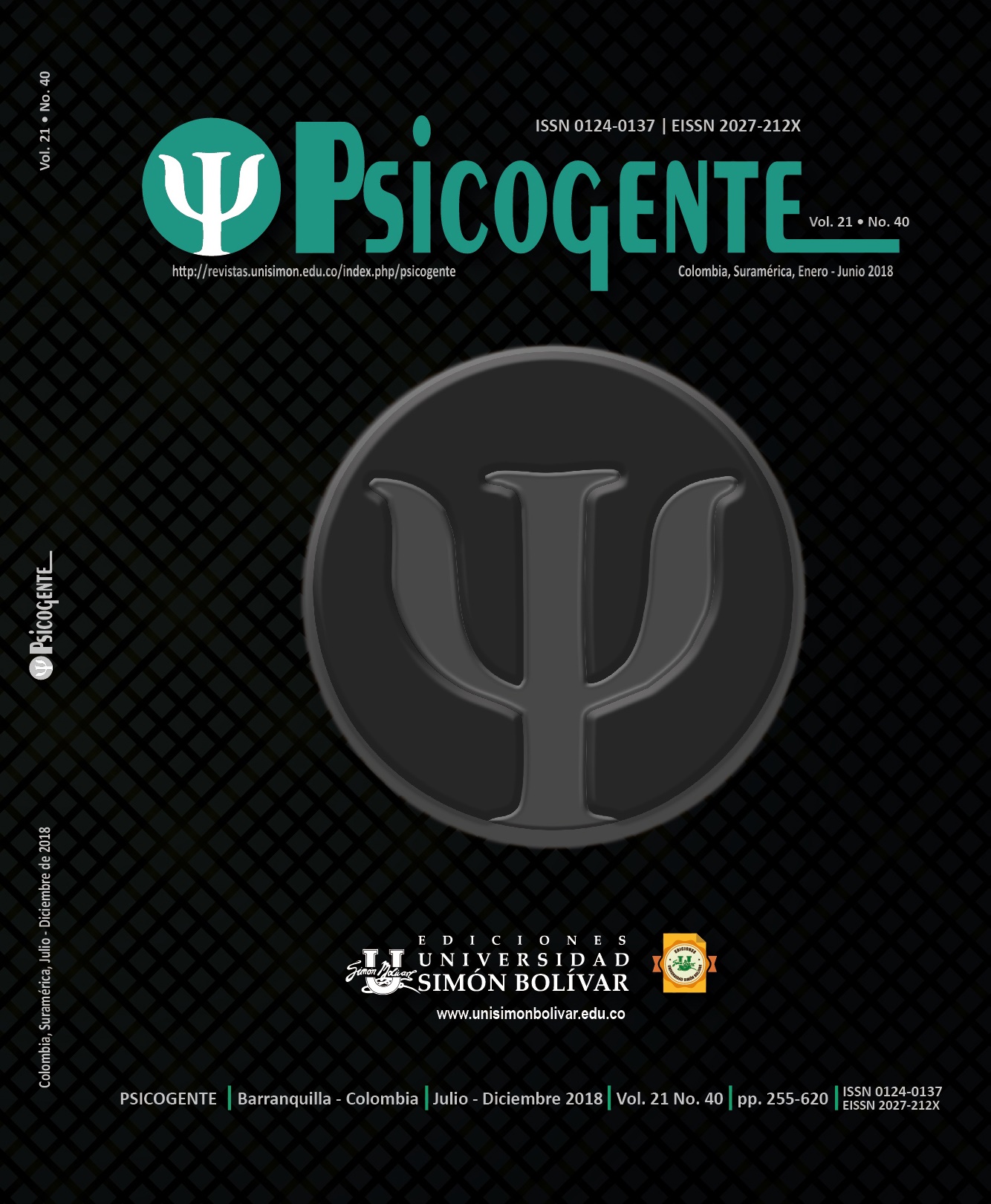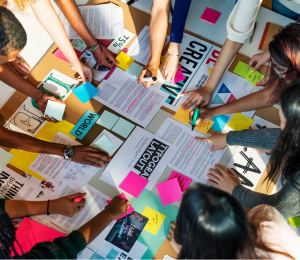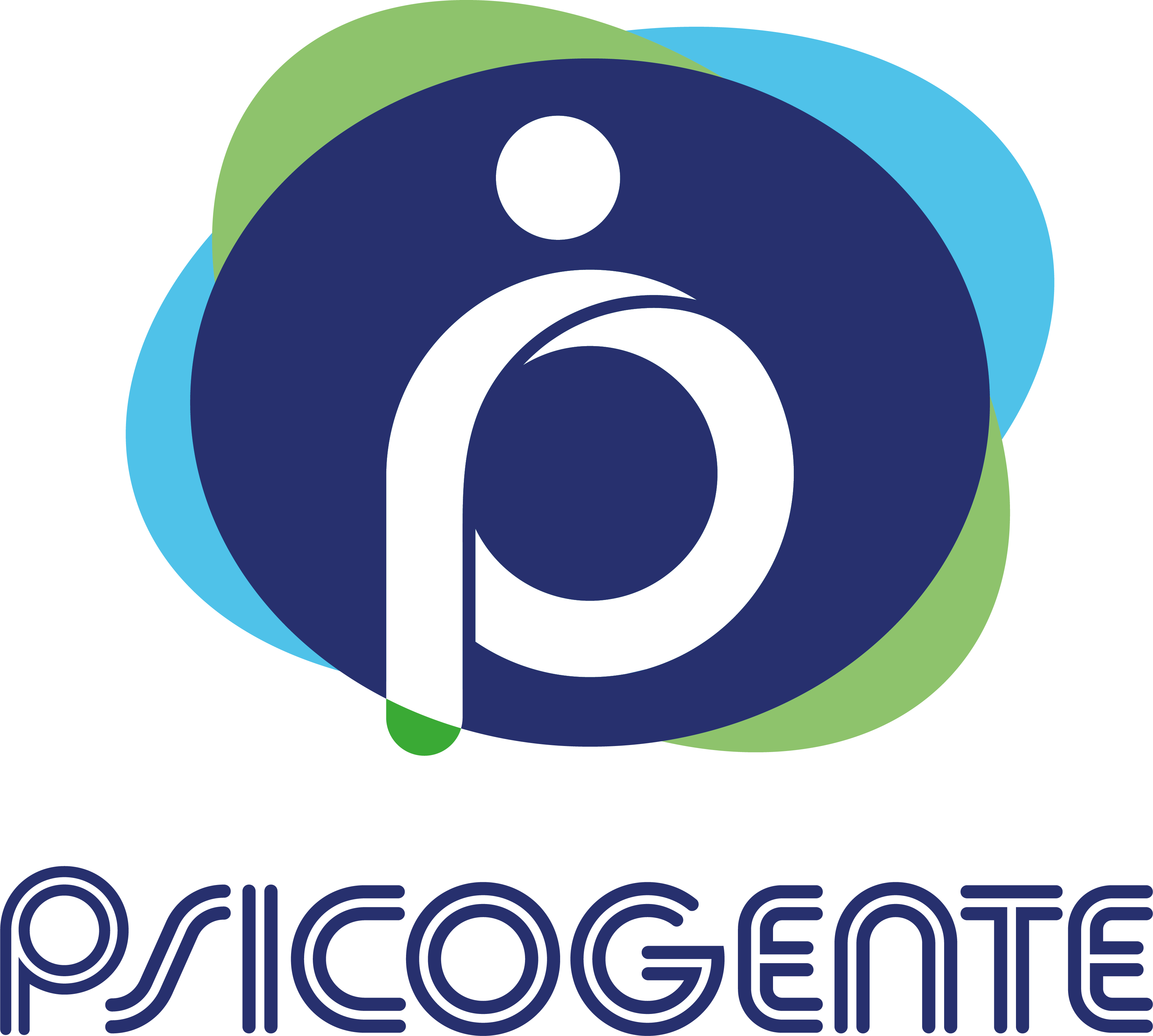Trazando puentes entre las neurociencias y la educación. Aportes, límites y caminos futuros en el campo educativo
Building bridges between neuroscience and education. Neurosciences’ contributions, limitations and future directions in the education field
DOI:
https://doi.org/10.17081/psico.21.40.3087Palabras clave:
neurociencias, neuroeducación, educación, aprendizajeResumen
Las neurociencias son el conjunto de disciplinas cuyo objetivo de investigación es el sistema nervioso, poniendo el acento en la actividad del cerebro y su relación con nuestros comportamientos. Abordan aspectos neurobiológicos de la conducta y se apoyan en la psicología cognitiva, la lingüística, la antropología y la inteligencia artificial. La neuroeducación, también llamada neurociencia educativa, es una disciplina en expansión que se ocupa de estudiar la optimización del proceso de enseñanza y aprendizaje con base en el funcionamiento del cerebro y los fundamentos neurobiológicos que lo sustentan. El artículo se
propone revisar aportes de las neurociencias al campo educativo, y a su vez críticas y futuros caminos para establecer relaciones aún más estrechas entre ambos. Se concluye que a pesar de que los aportes de la neuroeducación son variados y se esperan avances en el área, derivados de nuevas tecnologías, debemos ser cautos y críticos a la hora de analizarlos o ponerlos en práctica, ya que aún se deben generar estudios con mayor validez ecológica, en entornos educativos con seres humanos y con distintos niveles de análisis, sin dejar de lado la interdisciplina.
Descargas
Citas
Aberg, M., Pedersen, N., Torén, K., Svartengren, M., Bäckstrand, B., Jonson & Kuhn., G. (2009). Cardiovascular fitness is associated with cognition in young adulthood. PNAS, 106(49), 20906 –20911. DOI: 10.1073/pnas.0905307106
Bailey, D. B., Jr., Bruer, J. T., Symons, F. J. & Lichtman, J. W. (2001). Critical thinking about critical periods. Baltimore: Paul H. Brookes.
Ballarini, F. (2015). REC. Por qué recordamos lo que recordamos y olvidamos lo que olvidamos. Buenos Aires: Editorial Sudamericana.
Baquero, R. (1996). Ideas centrales de la Teoría Socio Histórica. En R. Baquero. Vigotsky y el aprendizaje escolar (pp. 31-62). Buenos Aires: Aique Grupo Editor S.A.
Barrios-Tao, H. (2016). Neurociencias, educación y entorno sociocultural. Educación y Educadores, 19(3), 395-415. DOI: 10.5294/edu.2016.19.3.5
Battro, A. M. (2011). Neuroeducación: El cerebro en la escuela. En La Pizarra de Babel: Puentes entre neurociencia, psicología y educación. S. Lipina y M. Sigman (Editores). Buenos Aires: El Zorzal.
Battro, A. M. & Cardinali, D. P. (1996). Más cerebro en la educación. Buenos Aires: La nación
Bedregal, P., Shand, B., Santos, M. & Ventura, P. (2010). Aportes de la epigenética en la comprensión del desarrollo del ser humano. Revista médica de Chile, 138(32), 366- 372. DOI: 10.4067/S0034-98872010000300018.
Blair, C. & Raver, C. (2016). Poverty, Stress, and Brain Development. Academic Pediatrics, 16(3), 23-31. doi:10.1001/jamapediatrics.2015.1475
Blakemore, S. J. & Frith, U. (2011). Cómo aprende el cerebro. Las claves para la Educación. Ariel: Barcelona.
Bowers, J. S. (2016). The Practical and Principled Problems With Educational neuroscience. Psychological Review, 4(2), 27-36. DOI: 10.1037/rev0000025
Bruer, J. T. (1997). Education and the brain: A Bridge too Far. Educational Researher, 26(8), 4-16. DOI: 10.3102/0013189X026008004
Cantero, M . (2013). La educación para la muerte. Un reto formativo para la sociedad actual. Psicogente, 16(30), 424-438.
Carriedo, A. (2014). Beneficios de la Educación Física en alumnos diagnosticados con Trastorno por Déficit de atención con Hiperactividad (TDAH). Journal of Sport and Health Research, 6(1), 47-60.
Catmur, C. & Heyes, C. (2017). Mirroring “meaningful” actions: sensorimotor learning modulates imitation of goal-directed actions. The Quarterly Journal of Experiment Psychology, 9(14), 1-38. DOI: http://dx.doi.org/10.1080/17470218.2017.1344257
China, N. & Ferreres, A. (2016). Cerebro, lectura y dislexia. En A. Ferreres & V. Abusama, (Eds.), Neurociencias y educación. Buenos Aires: Paidós.
Cicchetti, D. & Curtis, J. (2006). The developing brain and neural plasticity: implications for normality, psychopathology and resilience. Developmental Psychopathology, 2(7), 52-64. Doi:10.1016/j.chiabu.2011.10.006.
Damasio, A. (1996). El error de Descartes. La razón de las emociones. Santiago de Chile: Andrés Bello.
Daniel, C. & Poole, A. (2009). Learning for life, an ecological approach to pedagogical research. Perspectives on Psychological Science, 4(1), 91- 96. DOI:10.1111/j.1745-6924.2009.01095.x.
De Vos, J. (2016). The Educated Brain: A Critique of Neuroeducation. De Vos, J. (Eds.), The Metamorphoses of the Brain-Neurologisation and its Discontents. Ghent: palgrave MacMillan.
Dekker, S., Lee, N., Howard Jones, P. & Jolles, J. (2012). Neuromyths in Education: Prevalence and Predictors of Misconceptions among Teachers. Frontiers in Psychology, 3(2), 415- 429. DOI: 10.3389/fpsyg.2012.00429
Egan, K. (2005). ¿Empezar desde lo que el alumno sabe o desde lo que el alumno puede imaginar? Revista de didáctica de la lengua y la literatura, 3(2), 15-23.
Erk, S., Kiefer, M., Grothe, J., Wunderlich, A., Spitzer, M. & Walter, H. (2003). Emotional context modulates subsequent memory effect. Neuroimage, 2(4), 439- 447. DOI: https://doi.org/10.1016/S1053-8119(02)00015-0
Ertelt, D., Small, S., Solodkin, A., Dettmers, C., McNamara, A., Binkofski, F. & Buccino, G. (2007). Action observation has a positive impact on rehabilitation of motor deficits after stroke. NeuroImage, 36(8), 164-173. DOI: https://doi.org/10.1016/j.neuroimage.2007.03.043
Fenker, D. (2009). Importancia de la novedad en el aprendizaje y la memoria. Mente y Cerebro, 36(41), 21-36.
Fernandez-Duque, D., Evans, J., Chrisrtian, C. & Hodges, S. (2015). Superfluous Neuroscience Information Makes Explanations of Psychological Phenomena More Appealing. Journal of Cognitive Neuroscience 27(5), 926-944. DOI:10.1162/jocn_a_00750
Fink, R. P. (2006). Why Jean and John couldn’t read and how they learned?. Newark, DE: International Reading Association.
Fischer, K. (2009). Mind, Brain and Education; Building a Scientific Groundwork for Learning and Teaching. Mind Brain and Education, 3(1), 3-16. DOI: 10.1111/j.1751-228X.2008.01048.x
Fonticiella, S. (2007). Trastornos del aprendizaje: Enfoque desde las Neurociencias. Educación inclusiva, 4(2), 13-30.
Fundación Botín. (2008). Educación, emoción y Social. Análisis Internacional. Cantabria, España: Fundación Botín.
Gabrieli, J. (2016). The Promise of Educational Neuroscience: Comment on Bowers. Psychological Review, 123(5), 613–619. DOI: http://dx.doi.org/10.1037/rev0000034
Gilestro, G., Tononi, G. & Cirelli, C. (2009). Widespread Changes in Synaptic Markers as a Function of Sleep and Wakefulness in Drosophila. Science, 324(3), 109-112. DOI: 10.1126/science.1166673
Gili, T., Fiori, V., De Pasquale, G., Sabatini, U., Caltagirone, C. & Marangolo, P. (2016). Right sensory-motor functional networks subserve action observation therapy in aphasia. Brain Imaging and Behavior, 3(2), 1-15. DOI: 10.1016/j.neurobiolaging. 2016.03.005
Golombek, D. (2011). Cronoeducación: Un tiempo para sembrar, un tiempo para cosechar, un tiempo para aprender. En La Pizarra de Babel: Puentes entre neurociencia, psicología y educación. S. Lipina y M. Sigman (Editores). Buenos Aires: El Zorzal.
Greenough, T., Black, E. & Wallace, C. (1987). Experience and brain development. Developmental Psychobiology, 22(3), 727–252. DOI: 10.2307/1130197
Hanneford, C. (1995). Smart Moves: Why Learning Is Not All in Your Head? Great Ocean Publishers, 7(8), 34-46.
Heyes, C. (2010). Where do mirror neurons come from? Neuroscience and Biobehavioral Reviews, 34(12), 575-583. DOI: https://doi.org/10.1016/j.neubiorev.2009.11.007
Hickok, G. (2014). The Myth of Mirror Neurons. The real Neuroscience of Communication and Cognition. Nueva York: Norton & Company.
Howard, J. (2011). Problemas en la integración neurociencia-educación: acercamiento a la investigación neuroeducacional. En La Pizarra de Babel: Puentes entre neurociencia, psicología y educación. S. Lipina y M. Sigman (Editores). Buenos Aires: El Zorzal.
Howard-Jones, P., Varma, S., Ansari, D., Butterworth, B., De Smedt, B., Goswami, U., Thomas, M., (2016). The Principles and Practices of Educational Neuroscience: Comment on Bowers. Psychological Review, 123(5), 620–627. http://dx.doi.org/10.1037/rev0000036
Iacoboni, M. (2009). Las neuronas espejo: empatía, neuropolítica, autismo, imitación o de cómo entendemos a los otros. Buenos Aires: Editorial Katz.
Immordino-Yang, M. H. (2004). A tale of two cases: Emotion and prosody after hemispherectomy. Brain and Neurosciences Special Interest Group, 9(3), 32-41.
Immordino-Yang, M. H. (2007). A tale of two cases: Lessons for education from the study of two boys living with half their brains. Mind, Brain, and Education, 1(2), 66-83. DOI: 10.1111/j.1751-228X.2007.00008.x
Jun-Ding, Z., Yu-Hsuan, L. & Yu-Wei, H. (2016). Treatment Effects of Action Observation Therapy in Stroke Rehabilitation: A Systematic Review and Meta-Analysis. Phisical Medicine and Rehabilitation, 97(10), 142- 160. DOI: http://dx.doi.org/10.1016/j.apmr.2016.08.441
Koizumi, H. (2005). Brain-Science & Education. Programs at the Japon Science and Technology Agency (JST). En Brain, Science and Education. Saitama, Japan: Science and Technology Agency.
Konishi, Y. (2005). Introduction of the Cohort Study. En Brain, Science and Education. Saitama, Japan: Science and Technology Agency.
Labín, A., Taborda, A. & Brenlla, M. (2015). La relación entre el nivel educativo de la madre y el rendimiento cognitivo infanto-juvenil a partir del WISC-IV. Psicogente, 18(34), 293-302. DOI: http://doi.org/10.17081/psico.18.34.505
LeDoux, J. E. (1998). Emotion and the limbic system concept. Concepts Neuroscience,
(1), 169–199.
Lipina, S. (2016). Pobre Cerebro. Buenos Aires: Siglo XXI.
Louzada, F. & Menna- Barreto, L. (2007). O Sono Na Sala De Aula. Tempo Escolar E Tempo Biológico. Río de Janeiro: Viera & Lent.
Marcus, G. (2013). The Problem with the Neuroscience Backlash. The New Yorker. Recuperado de: http://www.newyorker.com/tech/elements/the-problem-with-the-neuroscience-backlash
Marshall, P. J. & Meltzoff, A. N. (2015). Body maps in the infant brain. Trends in Cognitive Sciences, 19(9), 499-505. DOI: https://doi.org/10.1016/j.tics.2015.06.012
Meltzoff, A. N. & Moore, M. K. (1977). Imitation of facial manual gestures by human neonates. Science, 198(43), 75-78. DOI: 10.1126/science.198.4312.75
Morris Ayca, M. V. (2014). La neuroeducación en el aula: neuronas espejo y la empatía docente. La vida y la historia, 2(3), 7-18.
Paterno, R. (2014). Luces y penumbras de la neuroeducación. Revista Iberoamericana de Psicomotricidad y Técnicas Corporales, 4(3), 22-23.
Pineda-Alhucema, W. F. (2016). La Teoría de la mente desde el marco de la neurociencia cognitiva social. Psicogente, 19(35), 8-10. DOI: http://doi.org/10.17081/psico.19.35.1202
Portolés, A. & González, J. (2016). Actividad física y niveles de burnout en alumnos de la E.S.O. Retos, 29(4), 95-99.
Ravet, J. & Williams, J. (2016). What we know now: education, neuroscience and transdisciplinary autism research. Educational Research, 59(1), 1-16. http://dx.doi.org/10.1080/00131881.2016.1272429
Reigosa-Crespo, V., González, E., León, T., Torres, R., Mosquera, R. & Valdés (2013). Numerical Capacities as Domain-Specific Predictors beyond Early Mathematics Learning: A Longitudinal Study. PLoS ONE, 8(11), 13-28. https://doi.org/10.1371/journal.pone.0079711
Richaud, M. C. & Arán Filippetti, C. (2015). Desarrollo cognitivo de niños en vulnerabilidad social: una experiencia de intervención. Journal of Psychology Research, 12(5), 684-692. Doi:10.17265/2159-5542/2015.12.003
Rizzolatti, G. & Craighero, L. (2004). The mirror neuron system. Annual Review of Neuroscience, 27(31), 169-192. DOI: https://doi.org/10.1146/annurev.neuro.27.070203.144230
Roenneberg, T. & Merrow, M. (2014). Entrainment of the Human Circadian Clock. Cold Spring Harbor Symposia on Quantitative Biology, 72(1), 293-299. DOI: 10.1101/sqb.2007.72.043
Ruetti, E., Ortega, I. S. & González, J. M. (2014). Emociones y cognición. Factores moduladores del aprendizaje y la memoria en niños y adolescentes. Rodríguez L. A. y Edson Jorge H. (Eds.), Pensando la psicología educativa en la sociedad del conocimiento. Lima: Universidad Nacional de Educación.
Samuels, B. M. (2009). Can the Differences between Education and Neuroscience be overcome by Mind, Brain and Education? Mind Brain & Education 3(1), 45-55. DOI: 10.1111/j.1751-228X.2008.01052.x
Satel, S. y Lilienfeld, S. (2013). Brainwashed: The Seductive Appeal of Mindless Neuroscience. Washington: Basic Book.
Sheridan, K., Zinchenko, E. & Gardner, H. (2005). Neuroethics in Education. En J. Illes (Ed) Neuroethics in the 21st Century: Defining the Issues in Theory, Practice and Policy. Oxford: Oxford University Press.
Shonkoff, P. & Phillips, D. (2000). (Editors) From Neurons to Neighborhoods. The Science of Early Childhood Development. Washington DC: National Academy Press.
Skolnick, D., Keil, F., Goodstein, J., Rawson, E. & Gray, J. (2009). The seductive Allure of Neuroscience Explanations. Cognitive Neuroscience, 20(3), 470-477. DOI: 10.1162/jocn.2008.20040
Stringer, S. & Tommerdahl, J. (2016). Building Bridges between Neuroscience, Cognition and Education with Predictive Modeling. Mind, Brain, and Education, 9(2), 121-126. DOI: 10.1111/mbe.12076
Vales, L., Mora, B., Martínez, J., Gómez, C., Lungo, R. & Figoli, I. (2017). ¿La impulsividad cognitiva dificulta el desarrollo de la teoría de la mente en niños en situación de vulnerabilidad social? Revista Colombiana de Psiquiatría, 3(5), 211-234. DOI: https://doi.org/10.1016/j.rcp.2017.03.003
Waelti, P., Dickinson, A. & Schultz, W. (2001). Dopamine responses comply with
basic assumptions of formal learning theory. Nature, 412(6842), 37-49. DOI: 10.1038/35083500
Wittmann, M., Dinich, M., Merrow, M. & Roenneberg, T. (2006). Social Jetlag: Misalignment of Biological and Social Time. Chronobiology Internacional, 23(2), 497-509. DOI: http://dx.doi.org/10.1080/07420520500545979
Publicado
Cómo citar
Número
Sección
Licencia
Derechos de autor 2018 Lucas G. Gago Galvagno, Ángel M. Elgier

Esta obra está bajo una licencia internacional Creative Commons Atribución 4.0.
Desde la revista Psicogente impartimos una política de respeto con nuestra comunidad científica incluyendo a nuestros autores. Los autores tienen derecho a un trato respetuoso y atento en el proceso Editorial, que las evaluaciones de sus artículos sean justas, imparciales (para ello la revista procederá con la evaluación doble ciego) y se realicen en un tiempo razonable. Se deberá mantener la confidencialidad y los permisos para proceder con la publicación. Todo cambio solicitado por parte del comité, los pares y el Editor deberán ser explícitos y claramente justificados. Especifica que los autores/as conservarán sus derechos de autor y garantizarán a la revista el derecho de primera publicación de su obra, el cual estará simultáneamente sujeto a la Licencia de reconocimiento de Creative Commons BY que permite a terceros compartir la obra siempre que se indique su autor y su primera publicación a esta revista.
Garantizamos un proceso editorial transparente: desde las acciones de recepción del articulo hasta la validación final del mismo, se hará en comunicación constante con el autor. Las modificaciones en el estado de los artículos, así como las diversas decisiones tomadas sobre él y los tiempos de ejecución empleados se realizarán haciendo uso de la plataforma OJS y de ser necesario en contacto directo a través del correo de autores y de la revista Psicogente. Así mismo se procura la escogencia de Pares revisores idóneos: con perfiles y experiencia que lleven a una avaluación de calidad de cada documento sometido a revisión.






